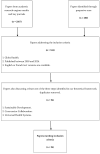Strategic Alliances in Global Health: Innovative Perspectives in the Era of Sustainable Development
- PMID: 38921312
- PMCID: PMC11204177
- DOI: 10.3390/healthcare12121198
Strategic Alliances in Global Health: Innovative Perspectives in the Era of Sustainable Development
Abstract
This article discusses current challenges in the field of global health and the World Health Organization's (WHO) strategies to address them. It highlights the importance of measuring the health impacts of global recession and globalization and the need for human-centered approaches to sustainable development. Emphasis is placed on commitment to health equity and the use of strategic partnerships for health at global, national, and local levels. Improving the health and well-being of populations, as well as public health equity, are core principles of the 2030 Agenda for the Sustainable Development Goals (SDGs). These principles are expressed in SDG 3, which promotes universal access to health services and systems and recognizes global health as a basic human right. It highlights the importance of strategic partnerships to combat emerging health crises, improve public health indices, and address the burden of chronic disease. These partnerships are contemplated in SDG 17 and are manifested in different modalities, such as network governance, cross-sector collaboration, public-private partnership, and social participation. This diversity of alliances has played an important role in scaling up and strengthening universal health systems around the world, including in Latin America and the Caribbean. The text concludes by presenting the essential characteristics of these inter-organizational and inter-institutional alliances in the field of global health.
Keywords: cross-sector collaboration; global health; strategic alliances; sustainable development; universal health systems.
Conflict of interest statement
The authors declare no conflicts of interest.
Similar articles
-
Urban health: an example of a "health in all policies" approach in the context of SDGs implementation.Global Health. 2019 Dec 18;15(1):87. doi: 10.1186/s12992-019-0529-z. Global Health. 2019. PMID: 31856877 Free PMC article.
-
Promoting immunization equity in Latin America and the Caribbean: Case studies, lessons learned, and their implication for COVID-19 vaccine equity.Vaccine. 2022 Mar 18;40(13):1977-1986. doi: 10.1016/j.vaccine.2022.02.051. Epub 2022 Feb 14. Vaccine. 2022. PMID: 35221122 Free PMC article.
-
The importance of SDG 17 and equitable partnerships in maximising participation of persons with communication disabilities and their families.Int J Speech Lang Pathol. 2023 Feb;25(1):183-187. doi: 10.1080/17549507.2022.2150310. Epub 2022 Dec 13. Int J Speech Lang Pathol. 2023. PMID: 36511819
-
Process of developing Country Cooperation Strategy in Tanzania, as an effective tool for aligning WHO's support to the member state in achieving health and health-related sustainable development goal.Pan Afr Med J. 2023 Jun 7;45(Suppl 1):2. doi: 10.11604/pamj.supp.2023.45.1.39584. eCollection 2023. Pan Afr Med J. 2023. PMID: 37538367 Free PMC article. Review.
-
Community health outreach program of the Chad-Cameroon petroleum development and pipeline project.Clin Occup Environ Med. 2004 Feb;4(1):9-26. doi: 10.1016/j.coem.2003.09.004. Clin Occup Environ Med. 2004. PMID: 15043361 Review.
Cited by
-
Decolonizing global health research: experiences from the women in health and their economic, equity and livelihood statuses during emergency preparedness and response (WHEELER) study.Front Public Health. 2025 Mar 26;13:1578964. doi: 10.3389/fpubh.2025.1578964. eCollection 2025. Front Public Health. 2025. PMID: 40206159 Free PMC article.
-
Sustainable development goals (SDGs) and resilient healthcare systems: Addressing medicine and public health challenges in conflict zones.Medicine (Baltimore). 2025 Feb 14;104(7):e41535. doi: 10.1097/MD.0000000000041535. Medicine (Baltimore). 2025. PMID: 39960902 Free PMC article. Review.
References
Publication types
LinkOut - more resources
Full Text Sources


